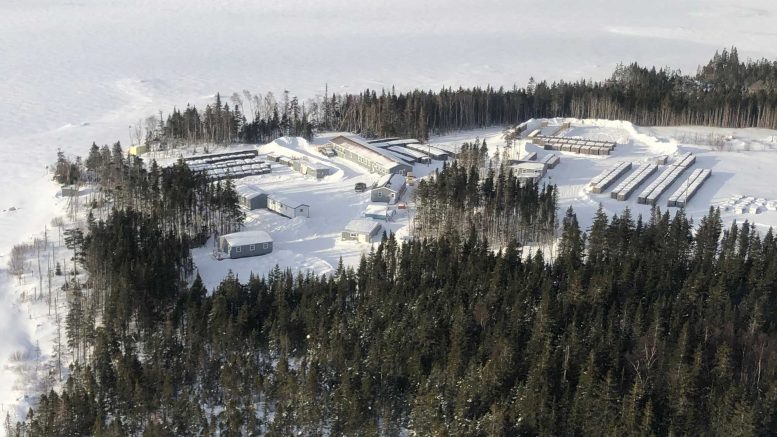Marathon Gold tests new section of Sprite Corridor; preps for Q1 Berry estimate

The latest batch of assay results from drilling at Marathon Gold’s Valentine gold project in central Newfoundland included several holes testing a previously unexplored 1.2-km section of the 6-km-long Sprite Corridor.
The Sprite Corridor hosts the main Marathon deposit and the recently discovered Berry deposit, the focus of most of the company’s recent exploration drilling. The 1.2-km section is located between Frozen Ear Pond Road on the west and the Marathon deposit on the west.
Hole MAS-20-017 – located near FEP Road – returned 4 metres of 8.55 g/t gold from 152 metre depth, including 1 metre of 18.76 g/t gold.
However the strongest results from the 24 holes released came from drilling closest to the Marathon deposit.
Marathon expects to release an initial resource for the Berry deposit towards the end of the first quarter
“The results released today represent the first drilling to be undertaken within the gap between the FEP Road and the westernmost margin of the Marathon deposit,” said Marathon president and CEO Matt Manson in a release. “This 1.2-kilometre section of the Valentine Lake Shear Zone had previously been under-explored due to poor ground conditions limiting drill access.”
While drilling encountered sporadic gold mineralization in quartz-tourmaline-pyrite-gold veining (characteristic of Valentine mineralization) along most of this length, Manson said the strongest mineralization was seen in drill holes located closest to the Marathon deposit. “This suggests the potential for Marathon mineralization extending up to 200 metres southwest of the currently defined mineral resource pit shell.”
Other drill highlights included 17 metres of 4.66 g/t gold from 21 metres depth, including 1 metre of 18.92 g/t gold in hole 001; and 17 metres of 2.02 g/t gold from 143 metres depth, including 1 metre of 19.46 g/t gold and 1 metre of 14.99 g/t gold in hole 008.
Marathon expects to release an initial resource for the Berry deposit towards the end of the first quarter.
The Valentine project is currently in the permitting stage. A prefeasibility study released in April outlined a $272-million open pit project with a mine life of 12 years that would produce an average of 175,000 oz. gold annually over the first nine years.
Valentine hosts proven and probable reserves of 1.9 million oz. in 41 million tonnes grading 1.41 g/t gold. Measured and indicated resources (inclusive of reserves) total 3.1 million oz. 54.9 million tonnes grading 1.75 g/t gold.
(This article first appeared in the Canadian Mining Journal)
{{ commodity.name }}
{{ post.title }}
{{ post.date }}


Comments